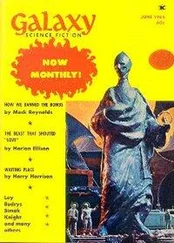PASSIONS stirred beneath Nantucket’s Quaker facade. Life might seem restrained and orderly as hundreds, sometimes thousands, of people made their way to meeting each Thursday and Sunday, the men in their long dark coats and wide-brimmed hats, the women in long dresses and meticulously crafted bonnets. But factors besides Quakerism and a common heritage also drove the Nantucket psyche—in particular, an obsession with the whale. No matter how much the inhabitants might try to hide it, there was a savagery about this island, a bloodlust and pride that bound every mother, father, and child in a clannish commitment to the hunt.
The imprinting of a young Nantucketer began at the earliest age. The first words a baby was taught included the language of the chase—“townor,” for instance, a Wampanoag word meaning that the whale has been sighted for a second time. Bedtime stories told of killing whales and eluding cannibals in the Pacific. One mother approvingly recounted how her nine-year-old son attached a fork to the end of a ball of darning cotton and then proceeded to harpoon the family cat. The mother happened into the room just as the terrified pet attempted to escape, and unsure of what she had found herself in the middle of, she picked up the cotton ball. Like a veteran boatsteerer, the boy shouted, “Payout, mother! Pay out! There she sounds through the window!”
There was rumored to be a secret society of young women on the island whose members pledged to marry only men who had already killed a whale. To help these young women identify them as hunters, boatsteerers wore chockpins (small oak pins used to keep the harpoon line in the bow groove of a whaleboat) on their lapels. Boatsteerers, superb athletes with prospects of lucrative captaincies, were considered the most eligible of Nantucket bachelors.
Instead of toasting a person’s health, a Nantucketer offered invocations of a darker sort:
Death to the living,
Long life to the killers,
Success to sailors’ wives
And greasy luck to whalers.
Despite the bravado of this little ditty, death was a fact of life with which all Nantucketers were thoroughly familiar. In 1810 there were forty-seven fatherless children on Nantucket, while almost a quarter of the women over the age of twenty-three (the average age of marriage) had been widowed by the sea.
In old age, Nickerson still visited the graves of his parents in the Old North Burial Ground. In 1819, during the last few weeks before his departure aboard the Essex , he undoubtedly made his way to this fenced-in patch of sun-scorched grass and walked among its canted stones. Nickerson’s father had been the first of the parents to die, on November 9, 1806, at the age of thirty-three. His gravestone read:
Crush’d as the moth beneath thy hand
We moulder to the dust
Our feeble powers can ne’er withstand
And all our beauty’s lost.
Nickerson’s mother, who had borne five children, died less than a month later at the age of twenty-eight. Her oldest living daughter was eight years old; her only son was not yet two. Her inscription read:
This mortal life decays apace
How soon the bubble’s broke
Adam and all his numerous race
Are Vanity and Smoke.
Nickerson, who was raised by his grandparents, wasn’t the only orphan aboard the Essex. His friend Barzillai Ray had also lost both his parents. Owen Coffin and Charles Ramsdell had each lost a father. This may have been their closest bond: each of them, like so many Nantucketers, was a fatherless child for whom a ship’s officer would be much more than a demanding taskmaster; he would be, quite possibly, the first male authority figure the boys had ever known.
PERHAPS no community before or since has been so divided by its commitment to work. For a whaleman and his family, it was a punishing regimen: two to three years away, three to four months at home. With their men gone for so long, Nantucket’s women were obliged not only to raise the children but also to run many of the island’s businesses. It was largely the women who maintained the complex web of personal and commercial relationships that kept the community functioning. J. Hector St. John de Crèvecoeur, whose classic Letters from an American Farmer describes his lengthy stay on the island a few years prior to the outbreak of the Revolution, suggested that the Nantucket women’s “prudence and good management…justly entitles them to a rank superior to that of other wives.”
Quakerism contributed to the women’s strength. In its emphasis on the spiritual and intellectual equality of the sexes, the religion fostered an attitude that was in keeping with what all Nantucketers saw plainly demonstrated to them every day: that women, who on Nantucket tended to be better educated than the island’s men, were just as intelligent, just as capable as their male counterparts.
By necessity and choice, the island’s women maintained active social lives, visiting one another with a frequency Crèvecoeur described as incessant. These visits involved more than the exchange of mere gossip. They were the setting in which much of the business of the town was transacted. The ninteenth-century feminist Lucretia Coffin Mott, who was born and raised on Nantucket, remembered how a husband back from a voyage commonly followed in the wake of his wife, accompanying her to get-togethers with other wives. Mott, who eventually moved to Philadelphia, commented on how odd such a practice would have struck anyone from the mainland, where the sexes operated in entirely different social spheres.
Some of the Nantucket wives adapted quite well to the three-years-away, three-months-at-home rhythm of the whale fishery. The islander Eliza Brock recorded in her journal what she called the “Nantucket Girl’s Song”:
Then I’ll haste to wed a sailor, and send him off to sea,
For a life of independence, is the pleasant life for me.
But every now and then I shall like to see his face,
For it always seems to me to beam with manly grace,
With his brow so nobly open, and his dark and kindly eye,
Oh my heart beats fondly towards him whenever he is nigh.
But when he says “Goodbye my love, I’m off across the sea,”
First I cry for his departure, then laugh because I’m free.
The mantle of power and responsibility settled upon the Nantucket woman’s shoulders on her wedding day. “[N]o sooner have they undergone this ceremony,” said Crèvecoeur, “than they cease to appear so cheerful and gay; the new rank they hold in the society impresses them with more serious ideas than were entertained before…[T]he new wife…gradually advises and directs [the household]; the new husband soon goes to sea; he leaves her to learn and exercise the new government in which she is entered.”
To the undying outrage of subsequent generations of Nantucket loyalists, Crèvecoeur claimed that many of the island’s women had developed an addiction to opium: “They have adopted these many years the Asiatic custom of taking a dose of opium every morning, and so deeply rooted is it that they would be at a loss how to live without this indulgence.” Why they took the drug is perhaps impossible to determine from this distance in time. Still, the portrait that emerges—of a community of achievers attempting to cope with a potentially devastating loneliness—makes the women’s dependence on opium perhaps easier to understand. The ready availability of the drug on the island (opium was included in every whaleship’s medical chest) combined with the inhabitants’ wealth may also help to explain why the drug was so widely used in Nantucket.
There is little doubt that intimacy—physical as well as emotional—between a wife and a husband must have been difficult to establish under the tremendously compressed circumstances of the few months available between voyages. An island tradition claims that Nantucket women dealt with their husbands’ long absences by relying on sexual aids known as “he’s-at-homes.” Although this claim, like that of drug use, seems to fly in the face of the island’s staid Quaker reputation, in 1979 a six-inch plaster penis (along with a batch of letters from the nineteenth century and a laudanum bottle) was discovered hidden in the chimney of a house in the island’s historic district. Just because they were “superior wives” didn’t mean that the island’s women were without normal physical desires. Like their husbands, Nantucket’s women were ordinary human beings attempting to adapt to a most extraordinary way of life.
Читать дальше












